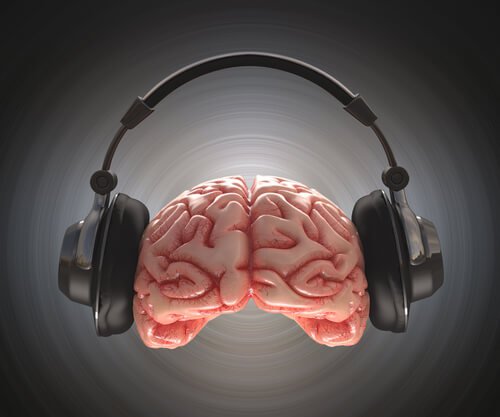Music: Therapy for the Soul

Remember for a second how it feels when you’re driving along and your favorite song is blasting on the radio. Or the feeling that invades you every time you listen to a song from your childhood. Or that melancholy that surrounds you when you hear a ballad which you once danced to with a special someone that is no longer in your life. Music produces feelings, sensations, joy, sadness, and melancholy. It summons memories, both good and bad.
In early January of this year, Rosa Montero published an article in El Pais Semanal magazine about a surprising book, Instrumental: Memories of Music, Medicine and Madness, by James Rhodes (Blackie Books). This British writer has a very rough biography: sexual abuse, suicide attempts, psychiatric internment, prostitution… But at the same time, Rhodes is living proof that music and the beauty it beholds can heal people.
“Music gives soul to the universe, wings to the mind, flight to the imagination, comfort to sadness and life and joy to everything else.”-Plato-
Rhodes is a pianist, though he started studying it late in the game, quit for 10 years and started again at nearly thirty years of age. In 2010, he became the first classical musician to sign a 6-album contract with the multinational label Warner. Usually, when someone quits an instrument, they never pick it back up. But he did, and the curative power of music has regenerated his life, allowing beauty back in.
The benefits of music
The well-known neurologist Oliver Sacks discusses, in his book Musicophilia, the relationship between music and the brain. He shows us how music can awaken damaged parts of the brain. In his book, he talks about people, not about patients, and tells us about shocking cases like that of Francois Lhermite, who can only identify one melody, “La Marsellesa”; or the case of Martin, a person with profound mental disabilities who knows more than two thousand complete operas by memory.

One of the most touching stories told by Sacks in his book is that of Clive Wearing, a British musician who suffered a cerebral infection at the age of 45 which severely affected his memory. From that point on, his memory only lasted seven seconds. But, when Clive sits down on a piano, everything flows and begins to connect with his memory and musical knowledge. His ability to play the piano and the organ, to sing or conduct a choir, have all remained intact.
“Music expresses everything that cannot be said with words and cannot remain in silence.”-Víctor Hugo-
But Oliver Sacks hasn’t been the only one that has demonstrated the benefits of music. Other scientists such as Sarah Johnson have even created a university discipline in the United States. Music therapy can produce important changes at a physiological level within the body. It accelerates and slows down organic functions (breathing, circulation, digestion, etc.). On a psychological level, it stimulates emotions (facilitates expression or produces a calming effect). On an intellectual level, it helps achieve concentration, stimulates the imagination and facilitates learning social skills.
The magic of playing an instrument
In the last decades, numerous experiments have been conducted in order to study how listening to music positively affects the brain. MRIs were performed on people while they solved mathematical problems and listened to music. In the latter case, it was detected that several areas within the brain became activated.
On the other hand, the brains of people who played instruments were analyzed, and it was confirmed that playing an instrument is equivalent to a full physical activity for the brain. Neuroscientists saw that different areas of the brain worked simultaneously and very swiftly.

Playing an instrument practically activates the whole brain at once, especially the visual, auditory and motor cortices. So the continued practice of an instrument can also benefit other activities.
The difference between listening to music and playing it is that the latter requires fine motor skills, which are controlled by both cerebral hemispheres. It also combines linguistic and mathematical precision, for which the left hemisphere is better suited, with creativity, which dominates in the right hemisphere.
For all of these reasons, it has been proven that playing music increases the volume and activity of the cerebral corpus callosum, the structure that connects both hemispheres. This allows musicians to solve problems in a creative way in many other areas of their lives.
Musicians have a more developed memory and can “label” their memories in diverse ways (contextual, emotional, auditory, etc.), almost like a good search engine on the web. Other activities such as sports and painting haven’t shown the same cerebral benefits of playing an instrument. They offer different advantages.
Remember for a second how it feels when you’re driving along and your favorite song is blasting on the radio. Or the feeling that invades you every time you listen to a song from your childhood. Or that melancholy that surrounds you when you hear a ballad which you once danced to with a special someone that is no longer in your life. Music produces feelings, sensations, joy, sadness, and melancholy. It summons memories, both good and bad.
In early January of this year, Rosa Montero published an article in El Pais Semanal magazine about a surprising book, Instrumental: Memories of Music, Medicine and Madness, by James Rhodes (Blackie Books). This British writer has a very rough biography: sexual abuse, suicide attempts, psychiatric internment, prostitution… But at the same time, Rhodes is living proof that music and the beauty it beholds can heal people.
“Music gives soul to the universe, wings to the mind, flight to the imagination, comfort to sadness and life and joy to everything else.”-Plato-
Rhodes is a pianist, though he started studying it late in the game, quit for 10 years and started again at nearly thirty years of age. In 2010, he became the first classical musician to sign a 6-album contract with the multinational label Warner. Usually, when someone quits an instrument, they never pick it back up. But he did, and the curative power of music has regenerated his life, allowing beauty back in.
The benefits of music
The well-known neurologist Oliver Sacks discusses, in his book Musicophilia, the relationship between music and the brain. He shows us how music can awaken damaged parts of the brain. In his book, he talks about people, not about patients, and tells us about shocking cases like that of Francois Lhermite, who can only identify one melody, “La Marsellesa”; or the case of Martin, a person with profound mental disabilities who knows more than two thousand complete operas by memory.

One of the most touching stories told by Sacks in his book is that of Clive Wearing, a British musician who suffered a cerebral infection at the age of 45 which severely affected his memory. From that point on, his memory only lasted seven seconds. But, when Clive sits down on a piano, everything flows and begins to connect with his memory and musical knowledge. His ability to play the piano and the organ, to sing or conduct a choir, have all remained intact.
“Music expresses everything that cannot be said with words and cannot remain in silence.”-Víctor Hugo-
But Oliver Sacks hasn’t been the only one that has demonstrated the benefits of music. Other scientists such as Sarah Johnson have even created a university discipline in the United States. Music therapy can produce important changes at a physiological level within the body. It accelerates and slows down organic functions (breathing, circulation, digestion, etc.). On a psychological level, it stimulates emotions (facilitates expression or produces a calming effect). On an intellectual level, it helps achieve concentration, stimulates the imagination and facilitates learning social skills.
The magic of playing an instrument
In the last decades, numerous experiments have been conducted in order to study how listening to music positively affects the brain. MRIs were performed on people while they solved mathematical problems and listened to music. In the latter case, it was detected that several areas within the brain became activated.
On the other hand, the brains of people who played instruments were analyzed, and it was confirmed that playing an instrument is equivalent to a full physical activity for the brain. Neuroscientists saw that different areas of the brain worked simultaneously and very swiftly.

Playing an instrument practically activates the whole brain at once, especially the visual, auditory and motor cortices. So the continued practice of an instrument can also benefit other activities.
The difference between listening to music and playing it is that the latter requires fine motor skills, which are controlled by both cerebral hemispheres. It also combines linguistic and mathematical precision, for which the left hemisphere is better suited, with creativity, which dominates in the right hemisphere.
For all of these reasons, it has been proven that playing music increases the volume and activity of the cerebral corpus callosum, the structure that connects both hemispheres. This allows musicians to solve problems in a creative way in many other areas of their lives.
Musicians have a more developed memory and can “label” their memories in diverse ways (contextual, emotional, auditory, etc.), almost like a good search engine on the web. Other activities such as sports and painting haven’t shown the same cerebral benefits of playing an instrument. They offer different advantages.
This text is provided for informational purposes only and does not replace consultation with a professional. If in doubt, consult your specialist.







